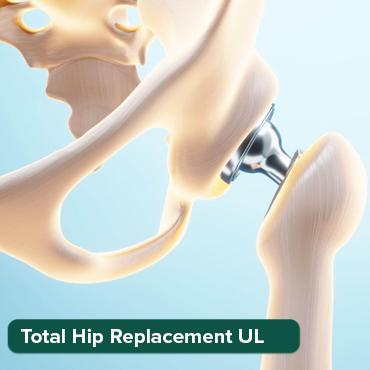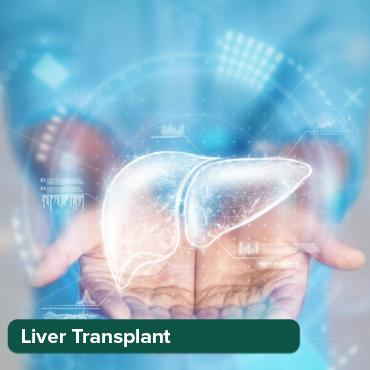
Brain Aneurysms : Guarding Against the Silent Threat
28 Sep, 2023
 Healthtrip Team
Healthtrip TeamIn this blog, we'll take you on a journey through the intricacies of this potentially life-altering condition, shedding light on its definition, types, symptoms, and causes. Understanding brain aneurysms is not only essential for your health but also for the well-being of your loved ones, as these silent threats can hide in the brain until a critical moment.
So, what exactly is a brain aneurysm?
Transform Your Beauty, Boost Your Confidence
Find the right cosmetic procedure for your needs.

We specialize in a wide range of cosmetic procedures

Well, think of it as a weak spot in a blood vessel in your brain. It's like a tiny balloon that can fill up with blood and get bigger over time.
Now, why is it important to understand brain aneurysms? ,because they can be quite serious. If one bursts, it can lead to some pretty severe problems, which is why it's crucial to know about them.
Types of Brain Aneurysms:
There are a few different types of brain aneurysms. The most common ones are called saccular aneurysms. These look like little bulges or sacs on the blood vessel.
Another type is called fusiform aneurysms, which are more elongated and spindle-shaped. They're a bit less common.
Then there are mycotic aneurysms, which are caused by infections. These are quite rare but can be very serious.
Symptoms of Brain Aneurysms:
Now, some brain aneurysms don't cause any symptoms at all. We call these asymptomatic aneurysms. You might not even know you have one unless it's discovered during a brain scan for some other reason.
Most popular procedures in India
Total Hip Replacemen
Upto 80% off
90% Rated
Satisfactory

Total Hip Replacemen
Upto 80% off
90% Rated
Satisfactory

Total Hip Replacemen
Upto 80% off
90% Rated
Satisfactory

ASD Closure
Upto 80% off
90% Rated
Satisfactory

Liver Transplant Sur
Upto 80% off
90% Rated
Satisfactory

But if an aneurysm does rupture, it can cause some pretty noticeable symptoms. These include:
- A sudden and severe headache, often described as the "worst headache of your life."
- Feeling nauseous and vomiting.
- A stiff neck, like you can't move your head comfortably.
- Changes in vision, like blurriness or double vision.
- Being extra sensitive to light.
- Sometimes, even losing consciousness.
these symptoms can be quite alarming, and if you or someone you know experiences them, it's important to seek medical help right away.
Causes of Brain Aneurysms:
1. Genetic Factors: First up, genetics can play a role. If your family has a history of brain aneurysms, you might be at a higher risk.
2. Smoking: Smoking is a significant risk factor. The chemicals in tobacco can weaken blood vessel walls, making them more prone to forming aneurysms.
3. High Blood Pressure: Speaking of weakening blood vessels, high blood pressure can do just that. It puts extra stress on those vessel walls, increasing the chances of an aneurysm developing.
4. Trauma: Sometimes, physical injuries or trauma to the head can lead to the formation of an aneurysm. So, it's essential to take head injuries seriously.
5. Age and Gender: Age matters too. Aneurysms are more common as you get older, and women tend to develop them more frequently than men.
How Diagnosis of Brain Aneurysms is bieng done ?:
Now, let's talk about how doctors figure out if you have an aneurysm.
A. Imaging Tests: These are like the detective tools doctors use to see what's going on inside your brain.
- CT Scan: It's like a high-tech X-ray that gives doctors detailed pictures of your brain. It's quick and often the first choice for diagnosis.
- MRI: This is another imaging method that uses magnets and radio waves to create detailed brain images. It's especially good at showing smaller aneurysms.
- Cerebral Angiography: Think of this as a road map of your blood vessels. A special dye is injected into your bloodstream, and X-rays are taken to pinpoint any aneurysms.
B. Lumbar Puncture: This one's a bit different. It involves taking a sample of your cerebrospinal fluid, which surrounds your brain and spinal cord. Sometimes, a ruptured aneurysm can release blood into this fluid, and the lumbar puncture can detect it.
So, these are the tools doctors use to diagnose brain aneurysms. Early detection is crucial, as it helps in planning the right treatment and increasing the chances of a good outcome.
Treatment Options for Brain Aneurysms:
A. Surgical Intervention:
- Clipping: Imagine a tiny, specialized clamp that's used to seal off the aneurysm. This procedure involves making a small incision in your skull to access the aneurysm. Then, the surgeon places the clip on the neck of the aneurysm to block blood flow into it. This prevents the aneurysm from rupturing.
- Coiling: Coiling is a bit different. Instead of a clip, a thin, flexible wire is guided through blood vessels from a distant entry point, like your groin, up to the aneurysm. Once there, the wire coils into the aneurysm, creating a mesh that disrupts blood flow and seals off the aneurysm. It's a less invasive option than clipping.
- Flow Diverters: This is a more recent innovation. A flow diverter is a stent-like device placed across the neck of the aneurysm. It diverts blood flow away from the aneurysm, allowing it to heal over time. It's another minimally invasive option.
B. Endovascular Embolization:
Similar to coiling, this method uses tiny coils or other embolic materials, like glue, to block off the aneurysm from the inside. It's done by threading a catheter through your blood vessels to reach the aneurysm. This approach is often chosen for aneurysms that are difficult to access with surgical techniques.
C. Watchful Waiting:
Sometimes, not taking immediate action is the best strategy. If the aneurysm is small, unruptured, and not causing symptoms, your doctor might recommend monitoring it closely with regular imaging scans. If it remains stable over time, no treatment may be necessary. However, if it grows or shows signs of being at risk of rupture, intervention may be considered later.
How can we help with the treatment?
If you're on the lookout for treatment in India, let Healthtrip be your compass. We will serve as your guide throughout your medical treatment. We'll be by your side, in person, even before your medical journey commences. The following will be provided to you:
- Connect with renowned doctors from a network spanning 35+ countries and access the world's largest health travel platform.
- Collaboration with 335+ top hospitals , including Fortis and Medanta.
- Comprehensive treatments from Neuro to Cardiac to Transplants, Aesthetics, and Wellness.
- Post-treatment care and assistance.
- Teleconsultations at $1/minute with leading surgeons.
- Trusted by 44,000+ patients for appointments, travel, visa, and forex assistance.
- Access top treatments and packages, such as Angiograms and many more.
- Gain insights from genuine patient experiences and testimonials.
- Stay updated with our medical blog.
- 24/7 unwavering support, from hospital formalities to travel arrangements or emergencies.
- Pre-scheduled specialist appointments.
- Prompt emergency assistance, ensuring safety.
Risk Factors and Complications:
- Rupture Risk:
- The risk of an aneurysm rupturing is a significant concern, and it increases with the size and location of the aneurysm.
- Rebleeding:
- After an aneurysm rupture, there's a risk of rebleeding, which can be even more dangerous than the initial rupture.
- Vasospasm:
- Vasospasm is a condition where blood vessels in the brain constrict or narrow after an aneurysm rupture. This can lead to reduced blood flow and potential neurological complications.
- Hydrocephalus:
- In some cases, blood from a ruptured aneurysm can block the normal flow of cerebrospinal fluid, leading to hydrocephalus, which can increase pressure in the brain and cause symptoms like headaches and vision problems.
Prevention of Brain Aneurysms:
- Lifestyle Changes:
- Maintaining a healthy lifestyle with a balanced diet and regular exercise can help reduce the risk of developing aneurysms.
- Blood Pressure Management:
- Keeping blood pressure within a healthy range is crucial as high blood pressure is a significant risk factor for aneurysm formation and rupture.
- Avoiding Smoking:
- Quitting smoking is essential, as tobacco use weakens blood vessel walls and increases the risk of aneurysms.
- Genetic Counseling:
- If you have a family history of brain aneurysms or a genetic predisposition, consider genetic counseling to understand your risk and take appropriate precautions.
These strategies aim to minimize the risk of developing brain aneurysms and reduce the likelihood of complications if an aneurysm is detected. Remember, prevention and early intervention are key to managing this potentially serious condition.
Outlook for Individuals with Brain Aneurysms:
- The prognosis varies based on aneurysm size and whether it ruptured. Early detection and treatment improve outcomes.
- Post-treatment rehabilitation may be needed, with recovery varying per individual.
- Emotional support through counseling and support groups is vital for coping with the diagnosis and its effects.
Understanding brain aneurysms is crucial. Early detection and management are key to better outcomes. Stay informed about causes, symptoms, and treatment options for a healthier, informed life.
Wellness Treatments
Give yourself the time to relax
Lowest Prices Guaranteed!

Lowest Prices Guaranteed!







